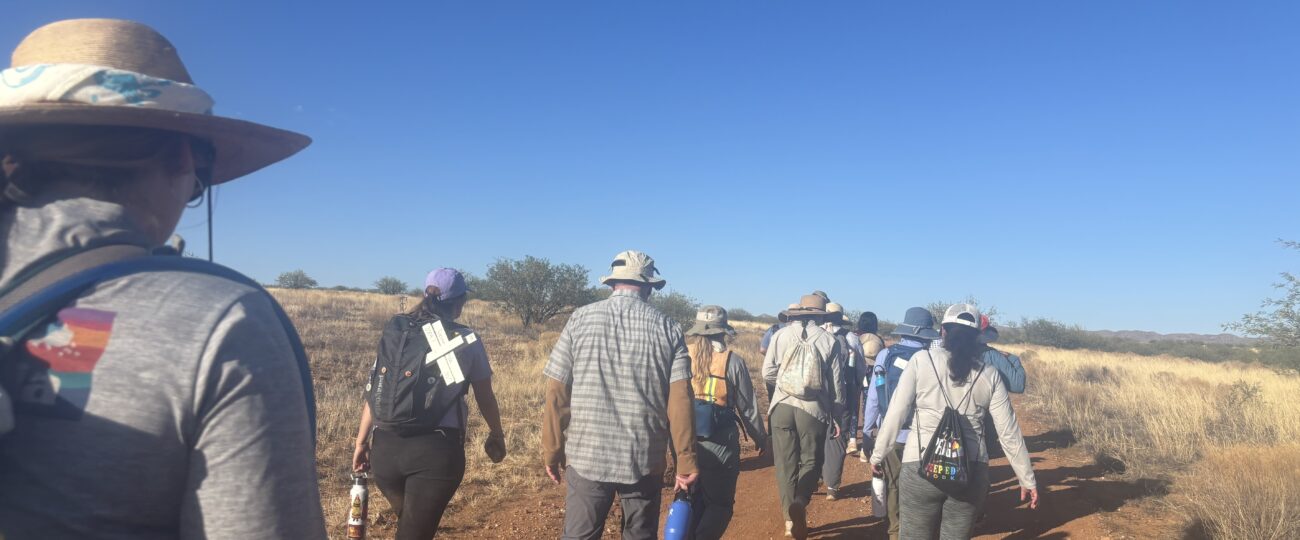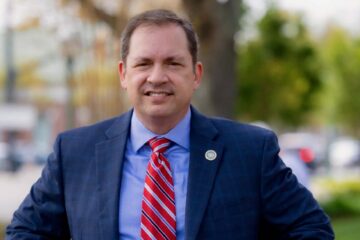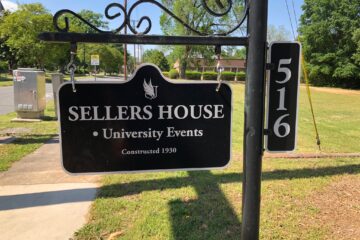The 75 mile trek started in Sasabe, Arizona, on May 26 and ended in Tucson, Arizona, on June 1 with the goal of honoring those who died crossing the U.S. – Mexico border.
Over 40 people came out to the mountainous, rugged terrain of the Arizona desert to honor the lives of those who have died crossing the border into America.
The Migrant Trail Walk was created in 2004 with the purpose of remembering and respecting the lives of those who died crossing the U.S.-Mexico border.
Their vision, according to a press release from the Arizona Migrant Trail Walk, reads, “The precarious reality of our borderlands calls us to walk. We are a spiritually diverse, multi-cultural group who walk together on a journey of peace to remember people, friends and family who have died, others who have crossed, and people who continue to come. We bear witness to the tragedy of death and of the inhumanity in our midst. Lastly, we make this sacred journey as a community, in defiance of the borders that attempt to divide us, committed to working together for the human dignity of all peoples.”
The first day of the walk is 5 miles and the group allows for other people to join for that day who can’t participate in the rest of the week-long walk. The walk started at the border wall in Sasabe, Arizona, and began with a Native smudging ceremony – a spiritual cleansing by burning tobacco.
Susan Walcott, a resident of Tucson, Arizona, helped lead the ceremony and has been participating in the walk for the past three years. While many people were on the walk for activism purposes, Walcott does it for spiritual purposes.
“I walk because it’s my way of making prayer, to give my sacrifice to my body and to be there physically for the people who have died. I’m not an activist. I’m here more in a spiritual, ceremonial capacity,” Walcott said.
She also noted how she’s known multiple people who participated in the walk, and that played a role in her decision to join – as it did with other participants.
Eric Meltzer, a resident of New Mexico, started participating last year after seeing his sister do it for the past 14 years.
“It was part that and I was in the retirement process, [so] now I have more time available to get away,” Meltzer said.
After the smudging ceremony, all the participants began their walk along South Sasabe Road. During that walk, participants began holding up crosses with the names of people who died in the desert crossing over into America and shouting their name.
Some crosses were marked as “no identificado,” meaning that the victim’s body couldn’t be identified.
After a lunch break and multiple water checkpoints, the group went into Buenos Aires National Wildlife Refuge to walk the rest of the five miles and set up camp in the desert.
There, participants were subjected to the terrain and wildlife that migrants deal with when walking through the desert. Dry desert heat, mountains, thorn bushes, cacti, rattlesnakes and gila monsters – just to name a few.
During this part of the walk, Sadie Yates, a graduate student from Fordham University in New York, spoke about why she participated in the walk.
“I’ve been interested in issues around migration for a while, and have done a little bit of work with migrants from different places in the states. Also, I am a PhD student at Fordham University, and I study pilgrimages. So for my research, I go to different sites, and I walk with different communities. And I had been chatting with some faculty mentors, asking around, like, ‘Hey, I would love to find a community, a site to go walk with that is a little less like individual and a little more justice oriented, community oriented, like working through communal grief.”
Yates continued, “So one of my mentors was like, ‘Oh, you know about the migrant trail, right? And I said, nope, and this was about two months ago. So he said, ‘Well, you should definitely look them up. And if you’re interested, you should join them.’ So here I am.”
Yates originally was heavily involved in the academic research sector of her major, but as time went on, Yates said she felt more attached and could make more of an impact on the ground with these communities.
“I’ve really stayed in this line of work, like as a theologian, because I just love learning from and with different communities on the ground and thinking about, what does a faith that pursues justice actually look like. I think this is a great example of like in practice, what it looks like, you know, things like this,” Yates said. “I really enjoy learning about really pressing issues, meeting people from all over who are doing inspiring work to try to address them, or at least raise awareness about them and yeah. So, you know, I continue to do this work because I just love it. I love being around people doing very real things.”
After one last water break, the group hiked the last mile and a half toward the campsite and set up shop for the night.
While most of the group was walking to honor migrants from Mexico, multiple people in the group were walking with the Palestinian people on their minds.
Sami DiPasquale, a resident of El Paso, Texas – who is heavily involved with working with migrants under his non-profit organization Abara – spoke about his connection to the walk and Palestine.
“It’s always, it’s always jarring, driving up, driving up to the fence, through beautiful landscape, and then coming up on this, this big wall. I think it also, for me, brings up memories very prominently of what’s happening in the Israeli-Palestinian context. I grew up in Jordan, right near there, and have many dear Palestinian friends who are suffering in the mix of that,” Sami DiPasquale said.
Sami’s 13 year old son, Salim DiPasquale, joined the trail with his father – a move he said he made on his own.
“I did it kind of on my own accord. My dad told me about it and I decided that I wanted to go on it,” Salim DiPasquale said.
Another participant, Mohyeddin Abdulaziz, immigrated from Palestine to Tucson in 1978. He said he sees a lot of similarities between Israel’s treatment of Palestinians and the United States’ treatment of Mexican migrants.
“When I first heard about what’s happening on our border lands – for me – it’s in our neighborhoods, in our communities. The people who come to this country, I know personally that no one really wants to leave their homeland, their families, unless they have to,” Abdulaziz said.
Abdulaziz has been participating in the walk for 16 years now, and has no intention of stopping anytime soon. However, he also placed an emphasis on the need for Gen Z to speak out.
“Speaking to the students at your university, they need to be aware of what their country is doing. And, I always speak to the young generation and tell them this is your time to be, I always use the term people of conscience, and to be people of conscience, you take a stand for justice, for freedom, for equality,” Abdulaziz said. “Young people need to grow to be activists. Just like they’re being good students, good in sciences or in humanities or in law, but also be concerned about their community, to contribute to their communities as they go, so it is your time to stand up and build this nation.”
The Trump administration’s recent controversies involving immigration and deportation were also heavily discussed on the walk.
“As an American, I’m ashamed of almost everything they’ve done,” Meltzer said.
“I think it’s not long before we’re in a complete autocracy. I don’t think we have far to go. I think everybody’s falling in line behind him, and the Supreme Court has set it up so he can’t be challenged on anything,” Walcott said. “I don’t have a lot of optimism about our future as a country. I don’t know what we can do. You know, we do things like this, but it’s pretty scary.”
“It’s extremely painful for us. In our context, we have so many dear friends who are negatively impacted by the decisions they made, both the very real, active decisions that the administration has made, but also – maybe even deeper still – the rhetoric around dehumanization. We know where that ends, as we’ve seen the Holocaust, genocides, slavery and ongoing wars and atrocities in them,” Sami DiPasquale said.
Abdulaziz also mentioned that previous administrations are just as complicit when it comes to the border wall.
“It’s been happening during the Biden and Obama administration, it’s not new.”
The group held a press conference on June 1 in Tucson, Arizona, after completing the other 70 miles of the walk.
While the 2026 walk is still a while away, their site is open and updated year round and includes contact information. For more information, visit their website at https://azmigranttrail.com/.




